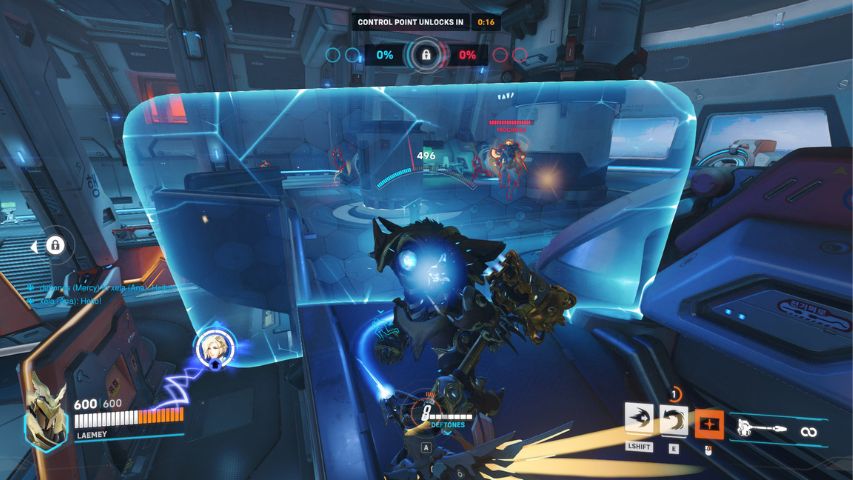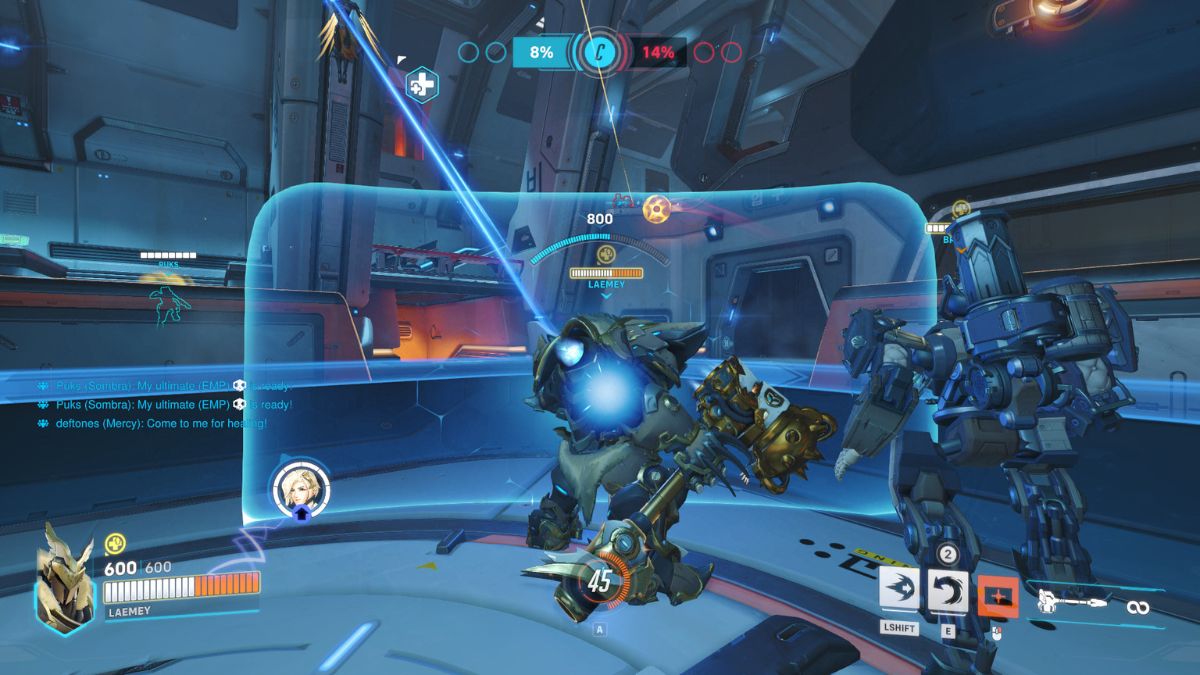![]() Key Takeaway
Key Takeaway
Tanks in Overwatch 2 will benefit from analyzing and improving their MIT stats. This new term stands for Damage Mitigated, and can make a big difference to your team’s win chances.
If you’re a Tank, you’ll want to know what MIT means in Overwatch 2. Understanding the scoreboard is a vital way to analyze your performance. To enhance your knowledge of your chosen hero’s skillset, you’ll want to master the scoreboard’s terminology—especially since new terms are added once in a while.
Table Of Contents
What Does MIT Mean in Overwatch 2?
You’ll find that MIT is a newly-introduced abbreviated term in Overwatch 2. MIT stands for Damage Mitigated and is a useful term to wrap around your head. The MIT stat is of particular importance for players who prefer a Tank role.
If you’re playing as a Tank, you’ll want to ensure you’re mitigating as much incoming damage as possible. That way, you’ll become an integral part of your team’s winning strategy.

Doing so will result in fewer deaths on your team, and increases the chances of surviving push modes in particular.
The MIT stat tracks and calculates the amount of damage you prevent during a match. It applies to all defensive actions, not just typical shield-blocking abilities. Successful damage deflections of any kind will count towards your final MIT stat. Do well enough and you may get closer to getting a desired player title.
This means that even if you’re not playing as a Tank, you can still bag MIT points through actions that prevent incoming damage.
Understanding MIT in Overwatch 2
Overlooking the MIT stat could be the key difference between a win and a loss. For that reason, it’s definitely worth checking out the scoreboard at the end of your matches to analyze your MIT numbers.
Tank heroes such as Roadhog, Junker Queen, Ramattra, and Winston, for example, should have higher MIT stats than Damage heroes like Genji or Soldier 76.
However, those who play as Support should also be able to fill up the MIT stat counter quite well. Any action that prevents incoming damage to your teammates will qualify as damage mitigation.
Analyzing and improving your MIT stat makes a major difference in terms of what you can bring to a team. In short, the higher your MIT stat is at the end of the match, the more likely it is that you played a key role in stopping your teammates from being eliminated.
Understanding Overwatch 2 Abbreviations
When playing a match in Overwatch 2, you can check your performance by opening up the scoreboard. You can pull it up mid-match or check out a more detailed breakdown at the end of your game. Either way, it’s useful to understand what each of the scoreboard abbreviations means.
- MIT – the amount of Damage Mitigated
- E – the number of Eliminations during a match
- A – the number of Assists during a match
- D – the number of player Deaths during a match
- DMG – the amount of Damage dealt
- H – predominantly for Support players, this indicated how much damage was Healed during the match
Heroes and Stats Tips
Overwatch 2 gives you plenty of choices when it comes to heroes and their roles. However, once you’ve jumped in and experimented with a few, you’ll probably have a preference for one or two heroes in particular.
While you familiarize yourself with the mechanics of the game’s 5v5 matches, you won’t need to focus too much on scoreboard stats. It’s really only once you’ve decided on a hero to main that you should take some time to check out the scoreboard.
Communication with your team is important, especially if you’re settling into a particular role. Ensuring everyone understands the different scoreboard stats makes a big difference to your team’s overall performance.
Take some time at the practice range to see which abilities have the biggest impact on your MIT stat. This is probably the best way to get a solid grasp of how best to use hero abilities to fend off incoming damage.
MIT, or Damage Mitigated, is a new but highly informative stat that teams should make themselves aware of in Overwatch 2. If you’re a Tank, be sure to visit the practice range and see if you’re using your skills and abilities effectively. Perfecting the art of deflection will lead to big boosts to your MIT stat and potentially bigger wins for your team. For extra precision, you can adjust your crosshair settings to further refine your gameplay.


